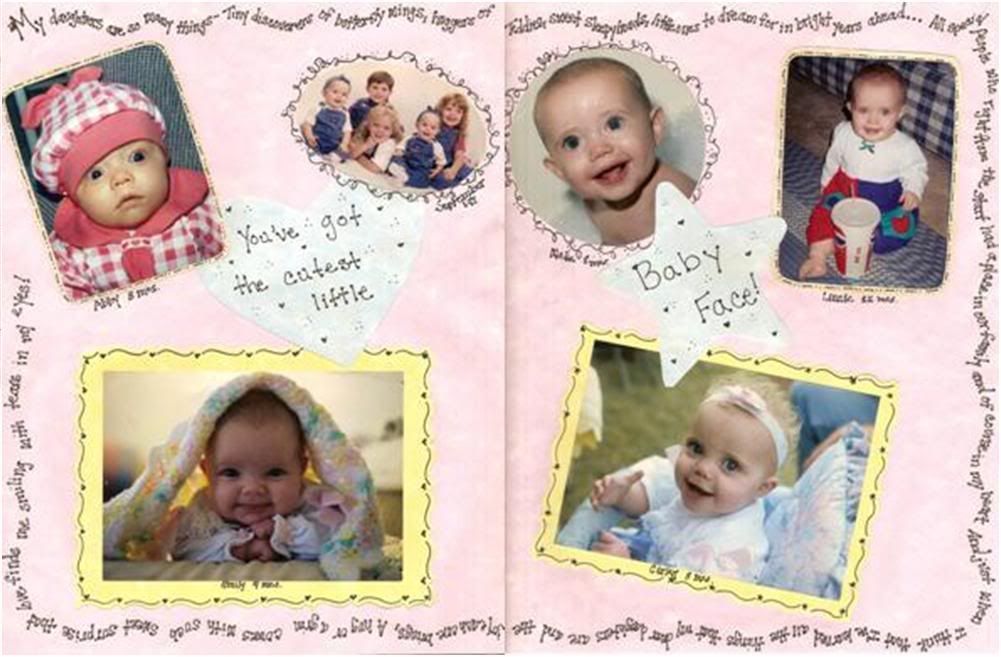Most people think of November as the month of giving thanks. But I feel overwhelming gratitude in September because of the miracles that I was given 14 years ago. I was only 25 years old and I had to make huge decisions on behalf of my unborn babies who were fighting a battle for their lives.
Dr. Troy Porter - Maternal & Fetal Medicine, Obstetrics & Gynecology
Dr. Porter was the one who noticed something was wrong with my twins at just 8 weeks gestation. He told me that my little Abby was "stuck." I couldn't understand what he was telling me. Stuck on what?? His online bio says that he has been practicing for 16 years, which means he had only been practicing for 2 years when he diagnosed me. I always felt calm when Dr. Porter was around. He had a great way of explaining things to me in a way I could understand.
- -Twin to Twin Transfusion Syndrome (TTTS) is a disease of the placenta (or afterbirth) that affects identical twin pregnancies.
- -TTTS affects identical twins (or higher multiple gestations) who share a common monochorionic placenta.
- -The shared placenta contains abnormal blood vessels which connect the umbilical cord and circulations of the twins.
- -The common placenta may also be shared unequally by the twins
- -The events in pregnancy that lead to TTTS are all random.
- -TTTS is not hereditary or genetic, nor caused by anything the parents did or did not do.
- -TTTS can happen to anyone.
I was 18 weeks pregnant when we flew to Milwaukee to have laser surgery to save my babies' lives. I was only the 23rd patient to ever undergo this procedure which was considered experimental.
Julian E. De Lia, MD, FACOG, FACS
 |
Dr. De Lia began investigating TTTS in 1983 and pioneered fetoscopic placental laser surgery in 1988 at the University of Utah, Salt Lake City. He subsequently brought his life-saving surgery to Wisconsin and Illinois. |
I have no doubt that Dr. DeLia saved my babies. He pioneered the surgery right here at the University of Utah, but I had to travel to Milwaukee to have the surgery. Abby's middle name is Julia in honor of him.
I was ordered on bed rest for the duration of the pregnancy so that my precious girls could have the best fighting chance. As I was recovering from surgery, I was interviewed for a twin support group.
How were you diagnosed?
Nikki: The main complication I had was that baby B was "stuck", meaning she had no fluid around her (shrinkwrapped in her sac) so she couldn't move much at all. This is actually how TTTS was diagnosed for us. We were originally told that our twins were monoamniotic because they couldn't see the second sac. So, I would put a flag out to all parents who are told that they have monoamniotic twins.. This is a big indicator of TTTS and it usually turns out that there are indeed two sacs.
The treatments can vary from monitoring, to serial amneiosentisis to laser surgery. Share your experience:
The treatments can vary from monitoring, to serial amneiosentisis to laser surgery. Share your experience:
Nikki:There are two methods of treating TTTS.. The most effective is the surgery because it treats the cause of TTTS.. Dr. Julian De Lia is the doctor and he now practices in Chicago. The surgery is still in the "research" phase though De Lia has it all routine now. It takes about 17-25 minutes to actually get in there and get the job done. The other method is serial amniocentesis (spelling most likely wrong).. This is where they draw fluid off of the bigger baby every 2 or 3 days in hopes of keeping the uterus stable.. Sometimes it even seems to help the situation in that the smaller baby (for reasons unknown) actually starts doing better. The problem here is that couples who think the surgery is their best option should have absolutely NO invasive action taken prior to the surgery. The reason is that every time the uterus is punctured for the amnio, scar tissue builds and sometimes bleeding into the fluid occurs.. Dr. De Lia needs absolutely clear and uncontaminated fluid and a smooth surface to operate with. We figured that if the surgery was not successful then we could try the amnio. Luckily for us, the surgery seems to have been 100% effective. We were diagnosed with TTTS when I was 16 weeks along.
I am not sure what the babies were weighing at the time, but I do know that they were 2 weeks apart in gestational size and the gap was increasing. We are now right on track with Linzie (Our bigger baby A) weighing around 1.5 lbs, and Abby (Donor baby B) weighing about 1.25 lbs. They are each around 12 inches long. They are still about 10 days apart in size, at 26 weeks gestation.
My second set of twins were born on September 27, 1996. They were 8 weeks early because Abby had stopped growing when the placenta finally gave out. As a mother, I had done everything I could for them. I had to let go and put my faith in a Higher Power and the skilled professionals caring for them in the NICU.
Within hours of their birth, Linzie was taken under this man's expert care.
Robert E. Shaddy, MD
Chief, Division of Cardiology
Professor of Pediatrics, University of Pennsylvania School of Medicine
*(KSL spelled Abby and Linzie's name wrong and I am no longer a "Randquist")
Did all of that really happen to me? Fourteen years later, I am amazed as I think back on how huge the decisions were and how lucky we are that we had a happy ending. Two happy, healthy girls to complete my family. I am a lucky mom indeed!



No comments:
Post a Comment